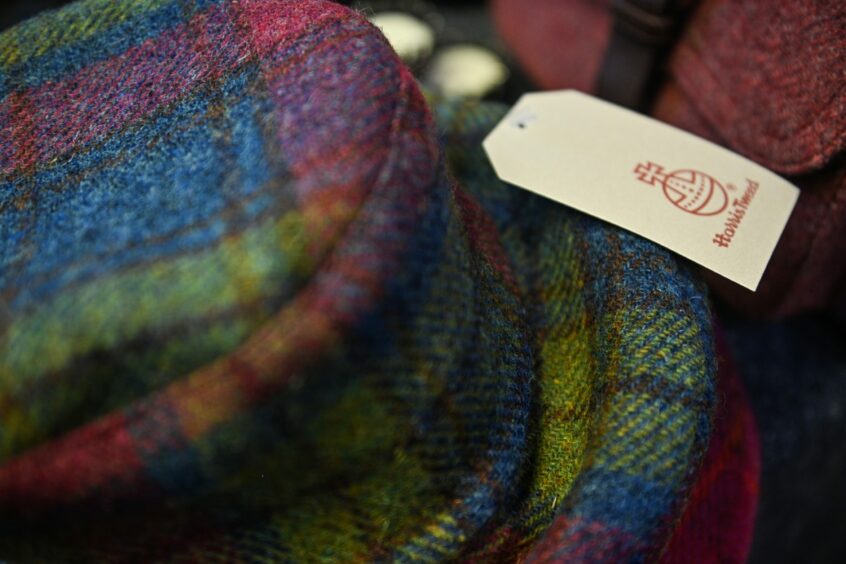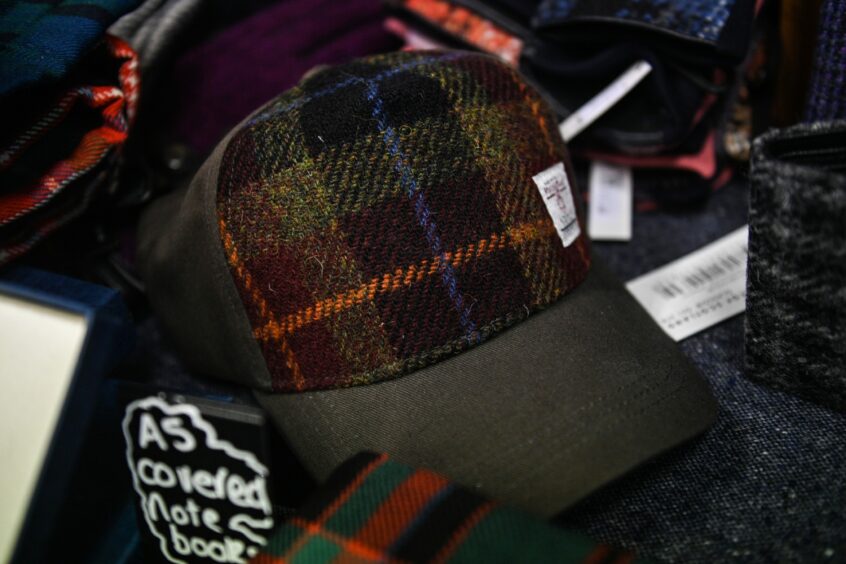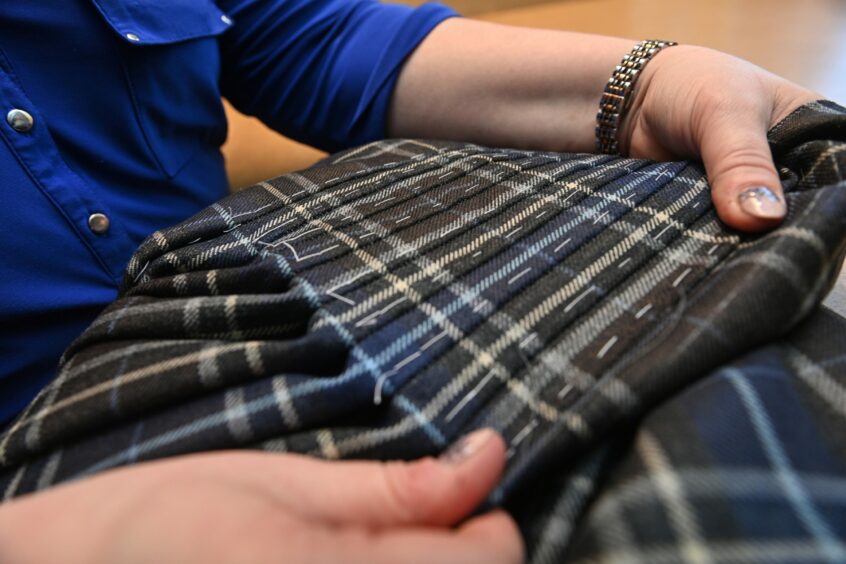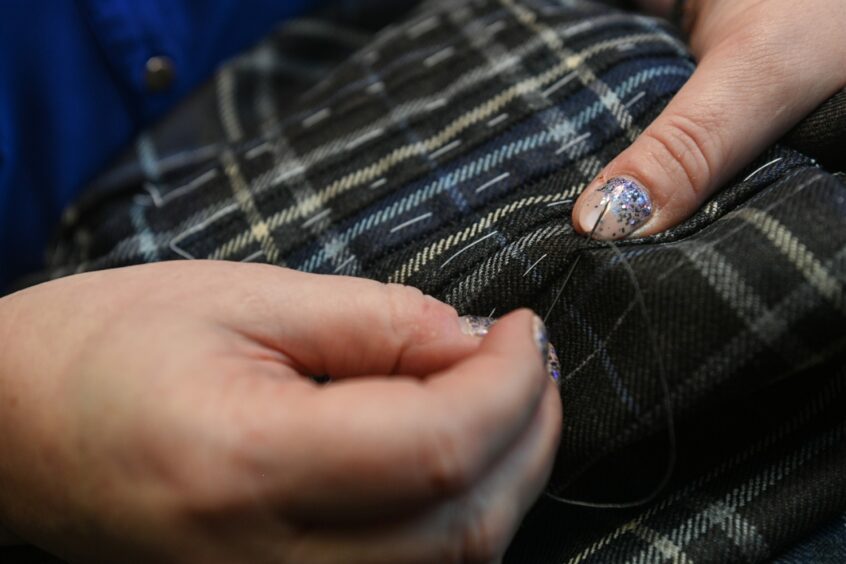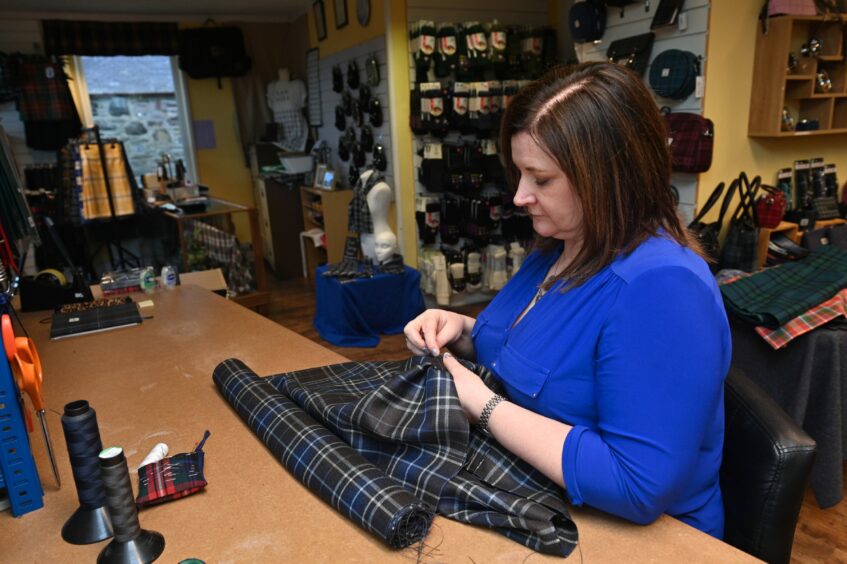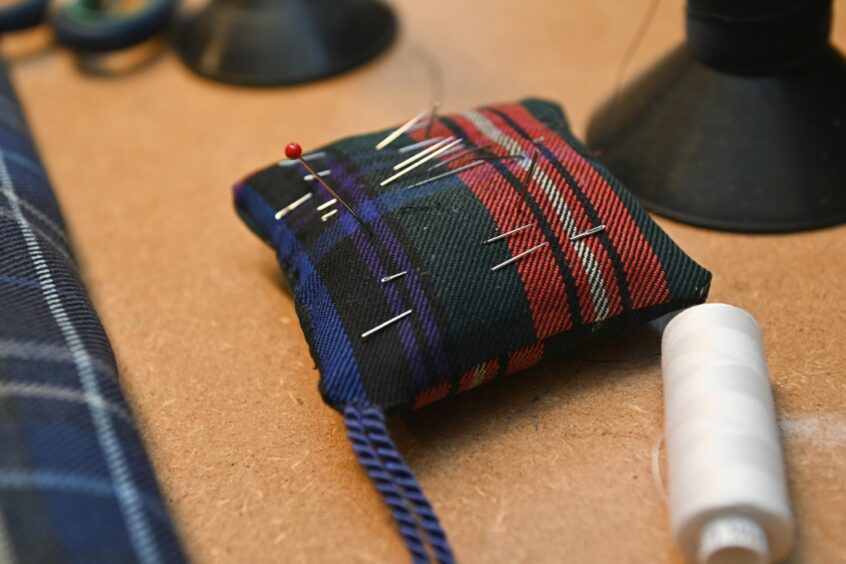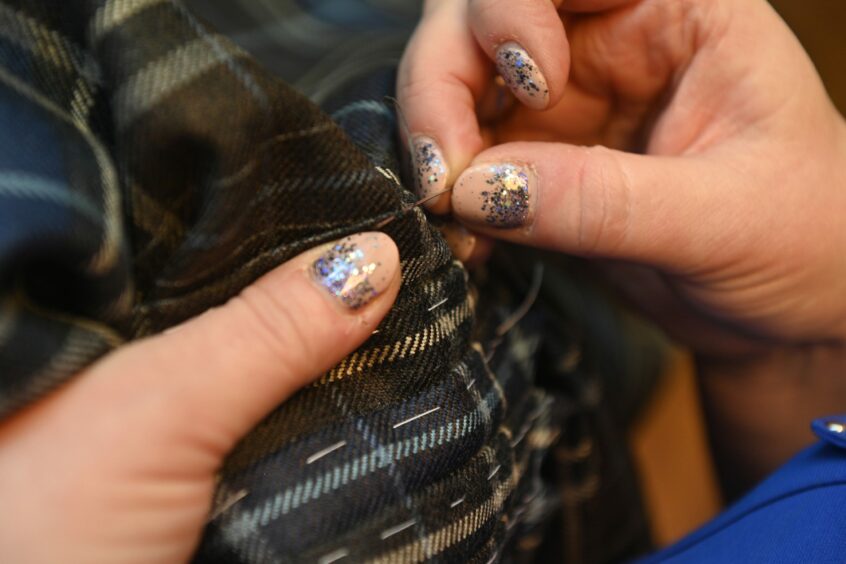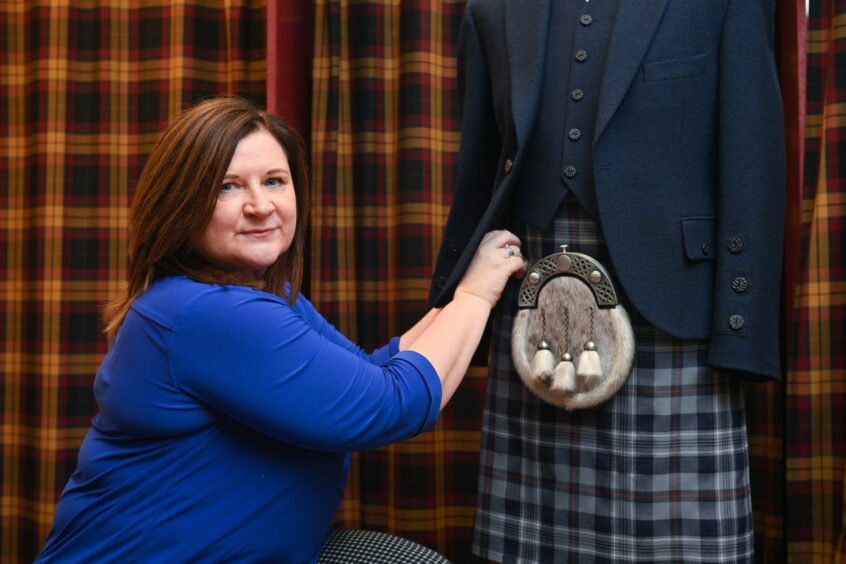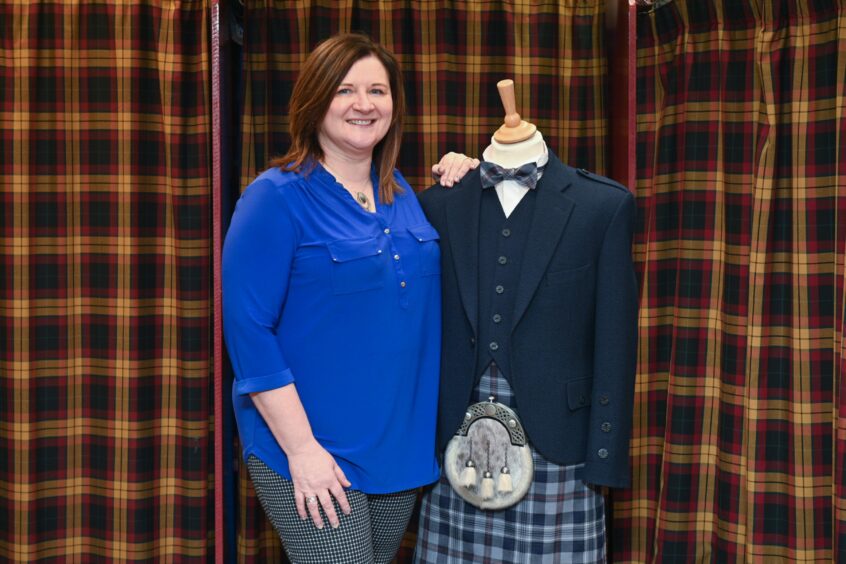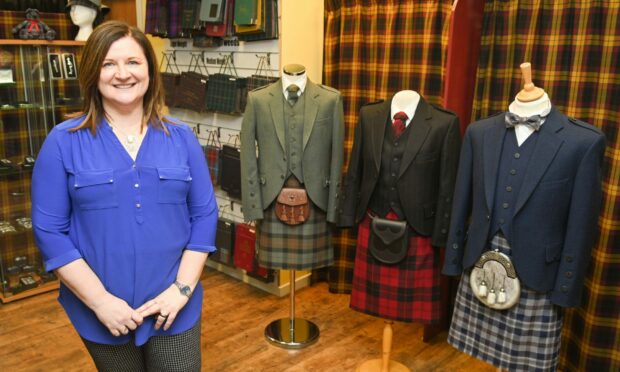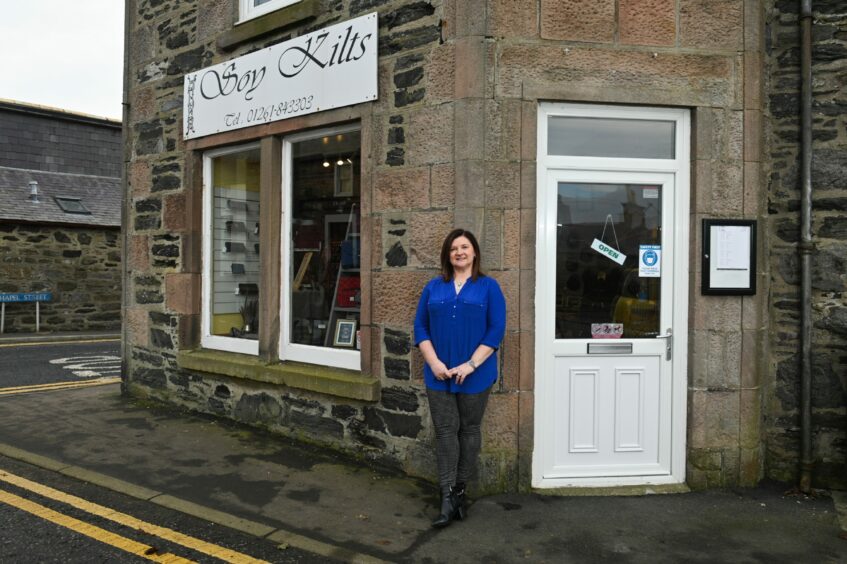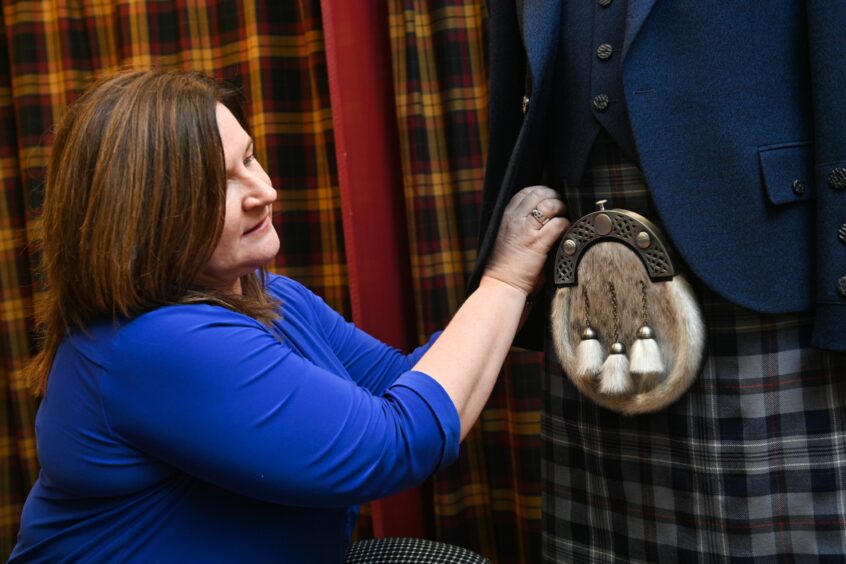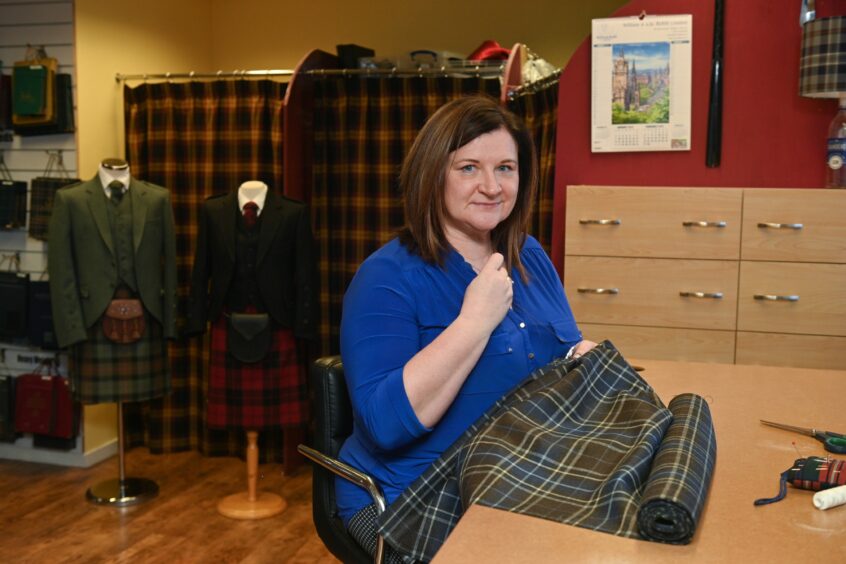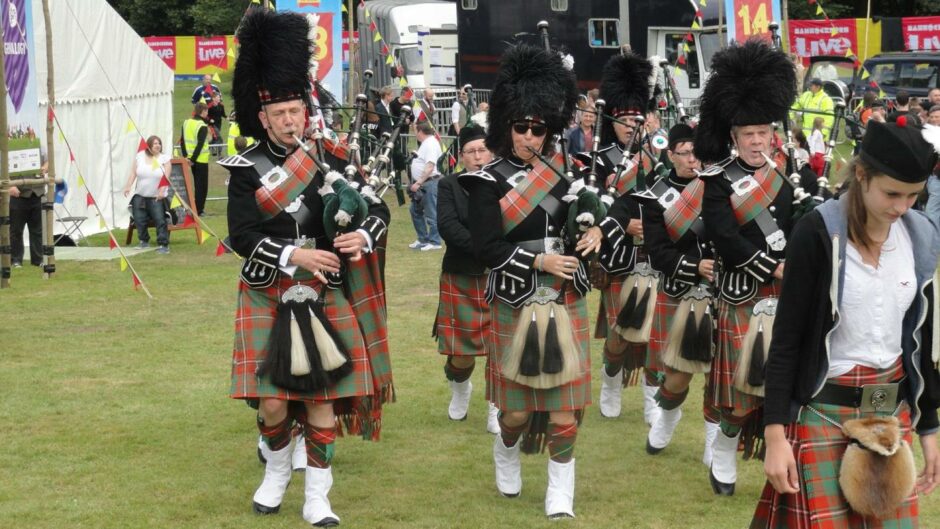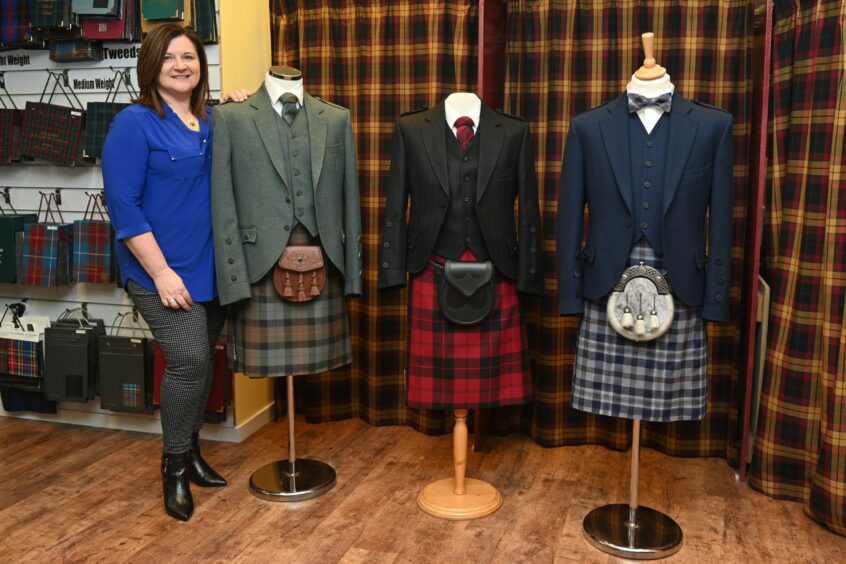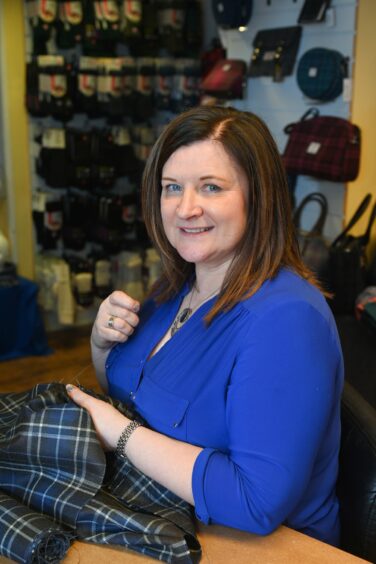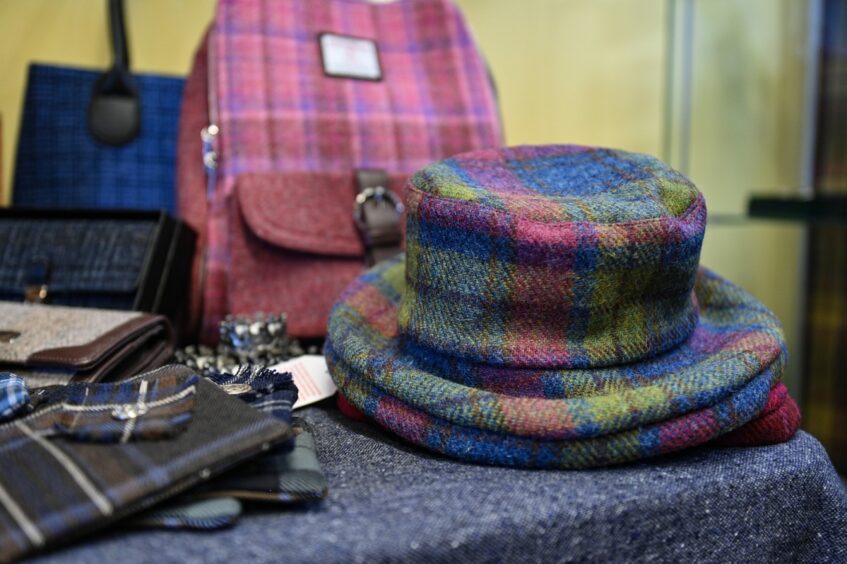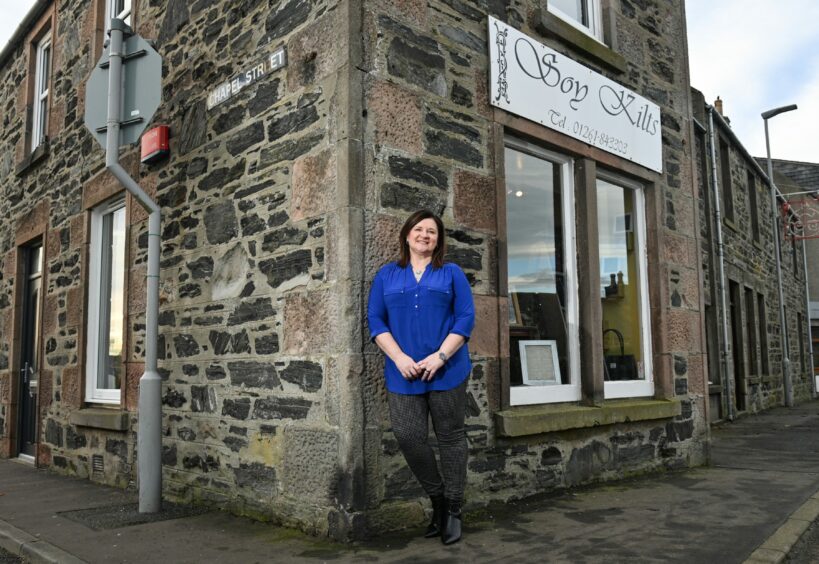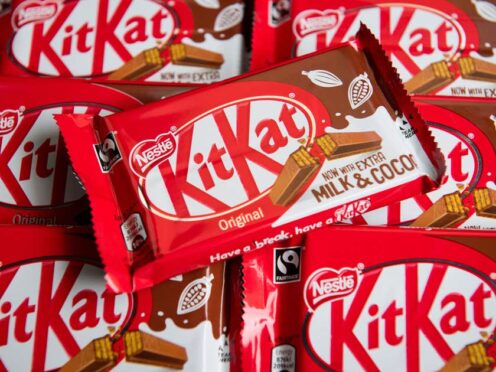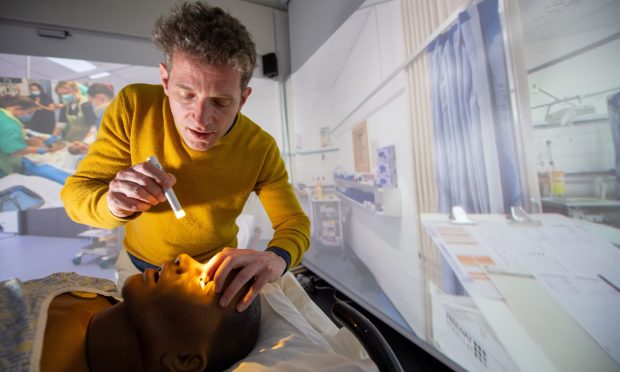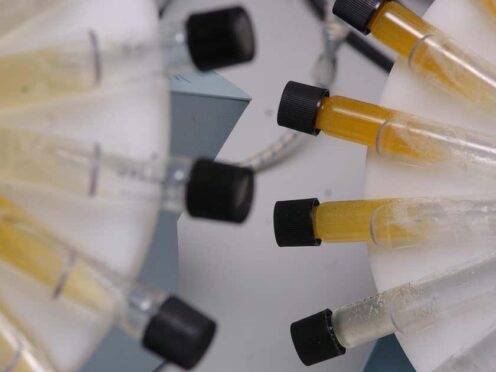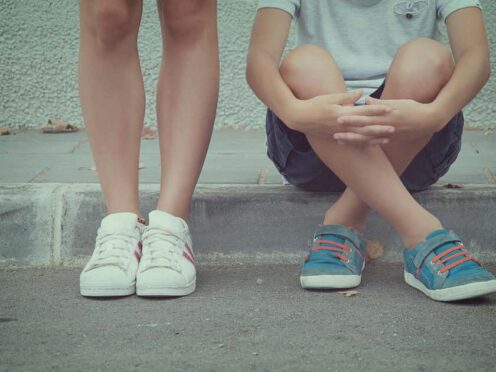As Burns Night approaches, all the finery, colour and panache of traditional dress comes into its own once more – and nothing says Scottish like a handmade kilt.
The forerunner to today’s modern-day kilt, the Feilidh Mor, Gaelic for “Great Kilt” or belted plaid, was worn widely by Highlanders from the 16th Century onwards. It was adapted for Scottish regimental military use in 1790, and this trimmed down, slimmed down garment was then broadly adopted by civilians throughout the 19th Century.
Today, the kilt has become synonymous with Scottish celebrations such as weddings, ceilidhs, sporting events and, of course, Burns Night.
Although mainstream kilt manufacture has provided an enormous range of machine and factory-made kilts to keep up with demand, original kiltmakers worked from home, stitching by hand – and for the true connoisseur, a bespoke, handmade garment is the first and only choice.
Carrying on that tradition is 52-year-old Moira George, of Portsoy. She opened Soy Kilts in 2004 after completing training with the original Keith Kilt School in 2002.
“It is the most traditional way for kilts to be made,” she said. “The man that taught us was ex-military, so it was very traditional. He’d made kilts for a long time and was very specific about how it should be done and I’ve stuck to that.”
The training involved making 15 kilts – charging only fabric costs – and Moira soon had her first customers.
Local kilt customers
“I worked from home originally working for a couple of companies,” she said. “But no one was making kilts in Portsoy at that time. Then the shop lease came up and I just went for it.”
It proved to be a smart decision, as much of Moira’s business comes from locals.
“Because I’ve been there a while now, I get whole families coming in: the dad, then the children as the sons get older,” said Moira. “It’s really good to have them coming back for accessories, like a different jacket. It’s a very personal thing. Everyone is different.”
Other orders are for remakes of old kilts, where a handed down (handmade) kilt can be unstitched, cleaned and remade for the next generation to use.
“I get quite a lot of remakes. If people inherit kilts, they don’t always realise it can be made bigger or smaller,” she says.
“They’ve got a kilt and they think, ‘Oh it doesn’t fit because it was grandad’s and he’s a lot bigger or smaller than me’, but you can remake them to a different size, so somebody’s getting the use of a kilt that is a family heirloom. It is lovely.”
International clients
Moira has attracted a number of notable clients in her career. Her kilt creations have been worn by some of the world’s most famous celebrities, singers and entertainers but, sadly, non-disclosure agreements forbid her from saying who.
However, she did achieve some international recognition when she was asked to make the kilts for an entire pipe band, the Clan Hay Pipe Band of Belgium.
“They came over to me when the band was just starting up and I’ve gone over twice to measure for bulk orders,” Moira said.
Over 25 kilts later and with TV appearances in Belgium, Moira is still the unofficial kiltmaker for the band.
“I go to their Highland games,” she smiles. “They’re really into their clans over there so I get a lot of work through that. They’ve been really good to me.”
Moira also makes kilts for the Buchan Peterson Pipe Band and Portsoy’s own pipe band.
Handing down skills
Given the enduring popularity of kilts, Moira also gives people a chance to make their own kilts for themselves or – more usually – loved ones, and runs classes each week over a 13-week course. But you don’t need to be an expert to make kilts as Moira is on hand every step of the way.
“Usually I try to get the client to come in with the person they’re making the kilt for. I measure them and they choose the tartan they want to use.”
Moira then lays out the kilts, sets the pleating, chalks in the details and leaves the sewing to the client, while being on hand to help.
She says: “They get to do a little bit of sewing at home, but until the pleats are all done they have to do it in the class so that I can keep an eye on them and guide them if they’re going a little off.
Making a kilt from scratch involves a lengthy process, from choosing the weight of the fabric, measuring the clients, and placing the pleats to the set (pattern), a skill that can take years to learn. However, Moira has streamlined this process and prepared the ground for her clients so that they can have their kilts without undergoing lengthy training.
“Not everyone wants to learn how to make kilts,” Moira adds. “A lot of people just want to stitch one together for a husband, for example.”
Business bouncing back
After scaling down work through Covid, business is now back on track and orders are flooding in for 2022 for weddings and dance outfits for Highland games.
However, for Moira, kiltmaking is much more than just making sales – it is the customers and locals that make the job worthwhile.
Moira said: “I really like the time with the customers. I don’t want everybody that leaves the shop to look the same. The kilt and outfit have got to have a lot of them in it. It’s got to have their input.
“It’s a huge commitment and I work long hours, but it’s never a thought to start work because I really do enjoy making kilts,” she adds.
“It is a passion, I still love what I do.”
